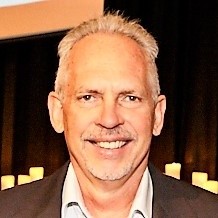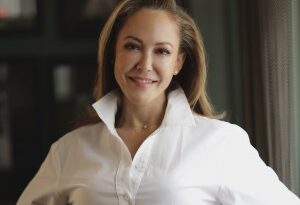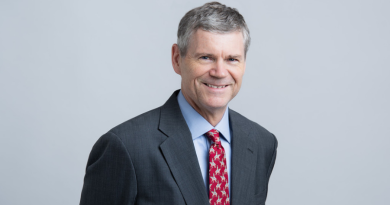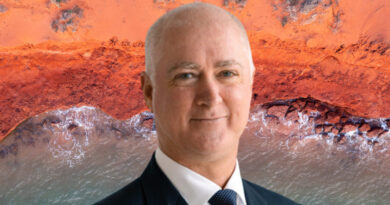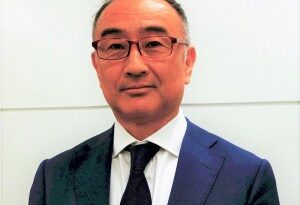Kim Ivey launches Albany Capital, a new global macro fund in Sydney
Kim Ivey is one of the best-known people in the Australian alternative investment industry. Now he is embarking on a new journey with the launch of a new global macro fund. He started his finance career in 1985 and over the years his roles have included President of AIMA Australia and Founder of Vertex Capital Management and LSL Partners.
You have co-founded a new hedge fund firm in Sydney, Albany Capital. Tell us about it!
Albany is really an amalgam of nearly two years of planning, testing, pitching and perseverance by the three Principals – Alastair Sloan, David Gray and myself. Al has a deep background in trading interest rates, FX and derivatives. My investment background covers equities, quant and portfolio risk. And David’s expertise is in running trading systems, business operations and all the necessary counterparty arrangements. Al had been most recently managing the TAA/DAA overlay at Sunsuper for their entire A$50 billion asset pool (since 2014). So, when he approached me in early 2019 about setting up a new investment business focusing on global macro, with a large superannuation fund as a potential seeder, it sounded like a great opportunity. We immediately sounded out many of our contacts and pitched our ideas to them to validate, or not, the worthiness of our offering. With honest feedback in the affirmative, Al and I began running a large trial paper global macro portfolio for the seeder as a form of due diligence, and David and I began putting the components together for building the business infrastructure. We interacted with the seeder each week. It all went well until Covid struck in early 2020. By April 2020, with huge turmoil in the world and in markets, we lost our seeder…after eight months of due diligence, some very good returns in the trial portfolio, well over 30 written reports on ideas, strategy, trades and performance and an approved operational budget. It was a major setback for us. But we believed in ourselves, we believed we had built and tested a world-class, global macro investment process and we believed in the business plans we had refined over the previous nine months. We just needed an investor! So in mid-2020, we pitched our work to three large prime brokers to see if they thought we had something worth marketing. All three said yes! They liked what we were developing and all three offered their consulting and cap-intro teams to us. With their teams’ involvement and six months of intensive Zoom marketing to investors around the world, we found an excellent match with a New York-based investment group that liked our global macro style, our attention to risk management and our operational and governance infrastructure. Then four-five months of onboarding. So today, after two years of hard work, we’re managing a significant amount of capital, we own 100% of the business and we’re hugely motivated to put our expertise to work for our investors.
How did you come up with the name of the company?
The company is named after the Albany Passage which is a body of water at the tip of Cape York, our northernmost point of Australia. Much of Australia’s early trade to and from its eastern settlements was shipped to/from Asia and Europe through a northern route, the Torres Strait, between Cape York and New Guinea. As such, the Albany Passage in the Torres Strait was really Australia’s first gateway to the rest of the world. Navigating through its reefs, the strong cross-currents and the changing weather conditions, was very dangerous and required considerable skill and expertise. In many respects, the analogy of what the Albany Passage represented to Australians, the testing conditions it posed to those who travelled through its waters, struck an immediate chord with the three principals as we embarked on building an investment firm in Sydney with skilled professionals to navigate complex and sometimes volatile markets around the world.
It’s a global macro strategy with the team split between Sydney and London. Was it part of the plan from the start to have a set-up across two continents or is it more a result of the people involved?
I’ve always believed the “holy grail” in the alternative investment industry is finding the right combination of talented people, operating within a robust infrastructure and attracting like-minded investors. We had always earmarked an overseas office expansion for Albany based on advancing at least one of these three objectives – acquiring a talented team member, improving on our infrastructure or attracting well-matched investors. The industry is so global these days and the technology is so advanced, both in terms of communication and investment systems, that the old adage that global macro managers needed to be close to capital centres is now defunct. Jonathan Hale, our first hire, is based in London. He is an exceptional trader, well known to Al having previously worked together in two different banks. Also having him based in London improves our global coverage on our portfolio. But finding the right person was always our priority…the infrastructure improvement was a bonus.
You have received a respectable seeding deal that is enabling the launch. What are the hardest parts of raising day one and early capital for emerging funds?
From my experiences, the hardest parts of a business launch in this industry are the very beginning and the very end. They each bring a different set of dynamics. In the beginning, one really has a blank piece of paper that needs to be completed with reasons why this business is going to succeed. A lot of why questions need to be answered honestly about yourself, your team, your skills, your product, your performance…Many times, going through these internal analyses, the answers are not what one expects and a choice has to be made. Not proceeding is an option. But in passing this, the middle part of a launch is just constant marketing, rejection and refinement. The more pitches one does, the better, and easier, they should become. The ending of the launch is hard because one has either found the seed investor or one hasn’t. Decisions flow on from there. Negotiating with the seed investor should be approached like any other important relationship. Find out as early as possible what they expect, articulate clearly what you expect and after careful examination, determine whether these are a match or not. Honest communication at this closing part is going to avoid many problems down the line. For Albany, we had one seeder walk away from us after eight months because of Covid externalities, scores turned us down mainly based on our Australian domicile, but conversely, we turned down two seeding deals because of the expectations from these seeders were incongruent to our own. Each of these “incompletes” was very difficult at the time. How does one know who is the right seeder? I can’t answer that completely with facts and figures. Yes, the capital and economics have to meet certain hurdles. Benefits have to be mutual. But there is a trust and bond that one feels almost immediately with the right group. If that isn’t there, keep looking.
This is not the first time you’re setting up a fund in Australia. Has it become easier to launch funds in Australia?
Launching in this industry is always very difficult because the bar is so high. Many excellent investment firms already exist in the alternative investment space irrespective if it’s in Australia, Asia, Europe or North America. Why do investors need another investment manager to choose from? Answering the “why” question in an honest and dispassionate manner to one’s self, one’s family and to one’s colleagues is an absolute pre-requisite for launching in this insanely competitive industry. Unless one is already working at a large firm with a recognised pedigree and the principal is going to spin you out with US$100m+ in seed capital, the typical start-up manager is going to spend an inordinate amount of his/her own time and money on the launch. It will all be wasted if the offering isn’t thought through sufficiently and it will ultimately fail if the team or the product doesn’t represent a tangible point of differentiation. If the people/process/product/performance all point positive, then I’ve found that two things can help in making the launch a success. View how you want the firm to look in three years’ time and then plan backwards to the launch. Find a natural order for tasks that can be implemented in parallel with others and identify others that require more effort in a sequential build-out. It will save a ton of time. And secondly, don’t compromise on quality, don’t cut corners or settle for second best. Aim extremely high. If one can demonstrate these qualities and articulate them well, and if one’s research is correct, investors will listen. One point on professional seeders and incubators…they aren’t for everyone and vice versa, but they are excellent sounding boards for anyone looking to launch an investment business.

